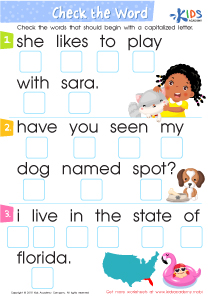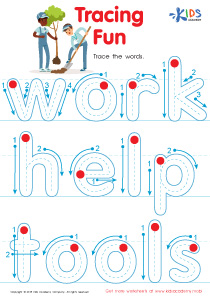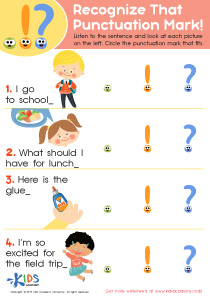Understanding suffixes Normal Writing Worksheets for Ages 5-7
3 filtered results
-
From - To
Unlock the power of words with our "Understanding Suffixes Normal Writing Worksheets" designed specifically for children ages 5-7. These engaging worksheets help young learners master the art of suffixes, enhancing both reading and writing skills. With fun and interactive activities, your child will learn to identify and use common suffixes, transforming their understanding of word formation. Our expertly crafted exercises are perfect for building foundational language skills, boosting confidence in literacy. Start your child's educational journey today with our comprehensive, age-appropriate worksheets that make learning suffixes an enjoyable and rewarding experience.


Reading: Words With Suffixes Worksheet
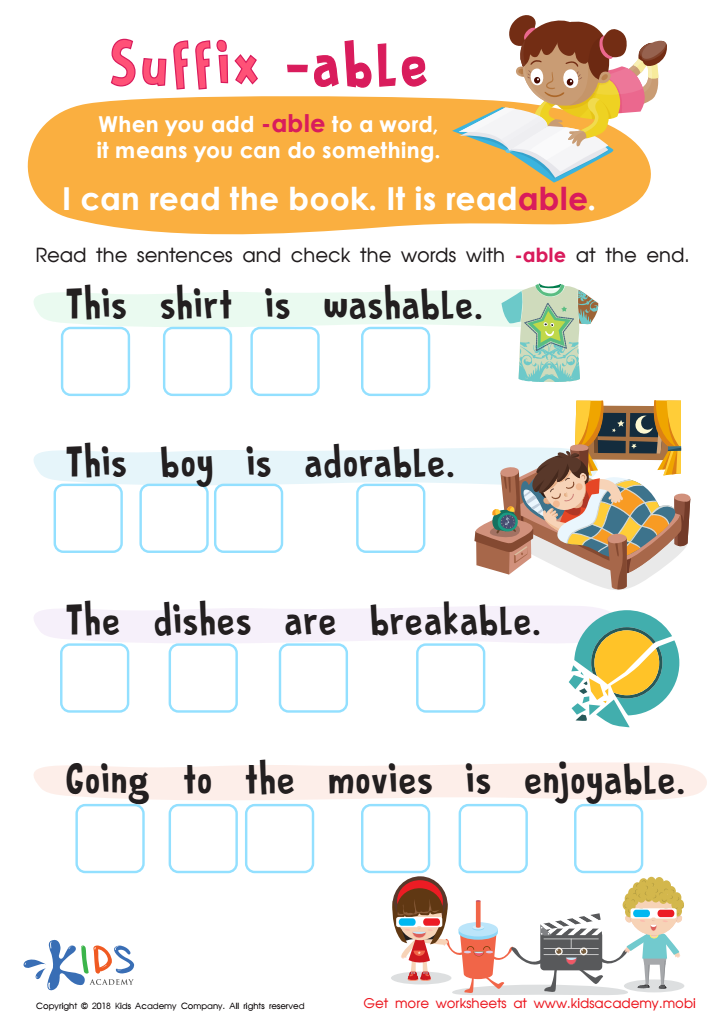

Suffix -Able Worksheet
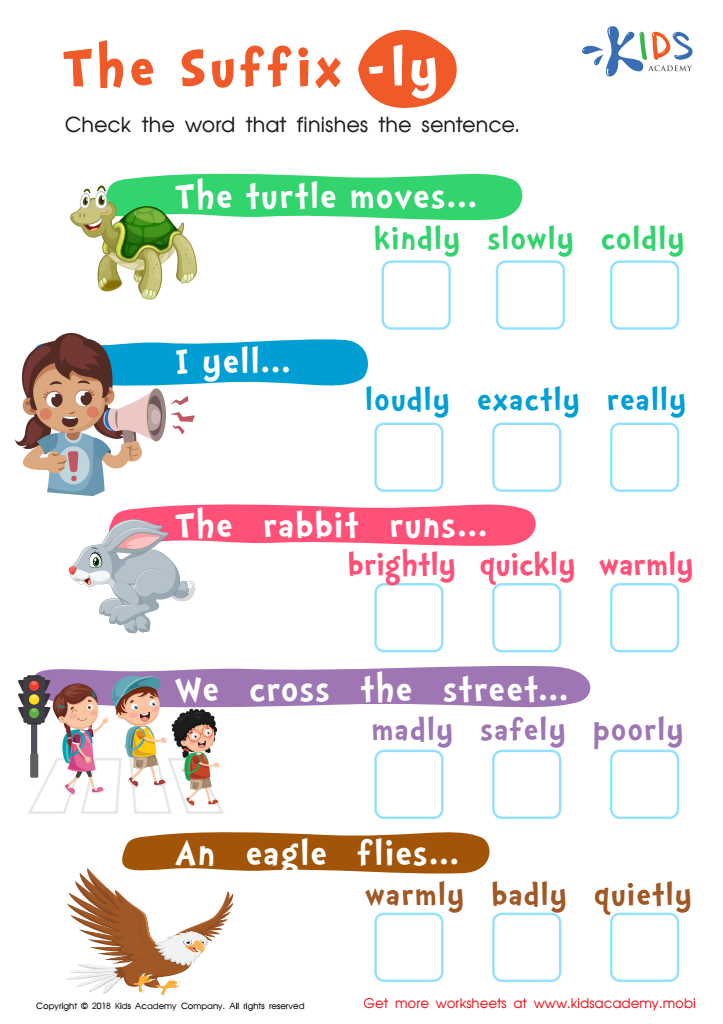

The Suffix -Ly Worksheet
Understanding suffixes is important for young children because it is a key part of their language and reading development. For ages 5-7, children are at a critical stage where they begin to grasp basic language concepts and develop foundational reading skills.
Suffixes are endings added to words that can change their meaning or function, such as "-ed" for past tense or "-ing" for ongoing action. By learning to recognize and understand suffixes, children can expand their vocabulary and improve their ability to decode new words. For example, knowing that "jump" becomes "jumped" when an action happened in the past helps children read more fluently and understand the context of stories better.
Parents and teachers should care about teaching suffixes because it empowers children to become more confident readers and writers. When children understand how suffixes work, they can make connections between different words, understand patterns in spelling, and comprehend more complex text. This, in turn, enhances their overall literacy skills, supports their academic success, and fosters a love for reading. Investing time in teaching suffixes pays off greatly as it strengthens children’s language foundation, enabling them to progress smoothly in their educational journey.
 Assign to My Students
Assign to My Students










